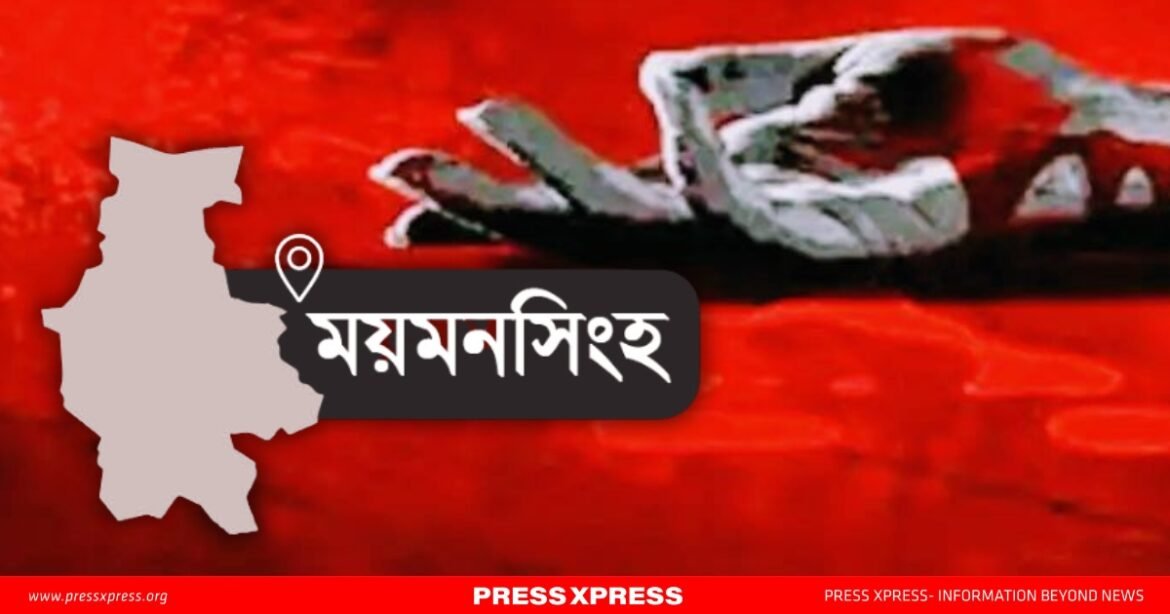In a horrifying incident that has sent shockwaves through Mymensingh’s Bhaluka upazila, a woman and her two young children were found slaughtered in their home late Sunday night. The victims—25-year-old Myna Begum, her seven-year-old daughter Raisa, and two-year-old son Nirab—were discovered on Monday morning by Myna’s husband, Rafiqul Islam.
Rafiqul, who works at a local mill, had returned from his night shift to find the door locked from the outside. Breaking it open, he was met with the devastating scene of his wife and children lying lifeless inside their rented house, owned by Hridoy Hasan Haiyum in Ward 7 of Bhaluka Municipality.
This brutal act is part of a disturbing pattern of violence currently gripping the nation.
Mob Lynchings, Rapes, and Religious Violence on the Rise
Just days before the Bhaluka murders, the nation was rocked by the lynching of scrap trader Lal Chand Sohag, who was beaten and stoned to death in broad daylight at Sir Salimullah Medical College (Mitford) Hospital in Dhaka. Hundreds watched, filmed, and did nothing.
In another deeply disturbing case from the same area, a Hindu woman was gang-raped by a local drug dealer known to have political protection. A mob later stormed her home, tortured her and her husband, and filmed her naked.
Religious violence has escalated dramatically. In Lalmonirhat, Paresh Chandra Shil was falsely accused of blasphemy and subjected to public torture. Meanwhile, in Dhaka’s Khilkhet, a Hindu temple was demolished by railway authorities allegedly under pressure from an Islamist group. In Chandpur, prominent Islamic scholar ANM Nur Rahman Madani was attacked with a machete after Friday prayers by a man accusing him of insulting the Prophet.
Rising Tide of Gender-Based Violence and Child Murders
From urban centers to rural villages, rape and violence against women and children have reached unprecedented levels. In Rangpur, an eight-year-old girl was raped and then hacked to death. In Bogura, a woman and her elderly father-in-law were found murdered in what authorities suspect to be a case of sexual violence.
According to reports from Mahila Parishad and Manabadhikar Shongskriti Foundation, at least 63 rapes were recorded in June 2025 alone—including 17 gang rapes and four where the victims were killed afterward. Many of the victims were minors; some were toddlers.
Arbitrary “local justice” in the form of slap-on-the-wrist punishments—like shoe-beating or small fines—has become alarmingly common. In one case, a rapist was fined just Tk 10,000 and told to perform community service.
Toward a Mobocracy: Rule of Law in Decline
Human rights groups warn that Bangladesh is veering dangerously close to mobocracy—a state where vigilante justice replaces the rule of law. In just ten months between September 2024 and June 2025, at least 174 people were murdered in mob attacks, and over 300 more were seriously injured. Between January and June 2025 alone, 62 were killed and 206 injured in such violence.
Reports suggest that over 1,000 leaders and activists of the ruling Awami League have been murdered in targeted attacks since last July. Dozens more have died in police custody or inside prisons, while the state has shown little meaningful response to these spiraling abuses.
Meanwhile, controversial figures like Nobel laureate Muhammad Yunus and his “interim government” allies have come under fire for seemingly legitimizing mob actions. One adviser recently referred to mobs as “pressure groups” and vigilante attacks as “mob justice”—prompting critics to brand Yunus as the “Mob King of Bangladesh.”
As women, children, religious minorities, and political opponents continue to face horrific violence with no recourse, the fear among ordinary citizens is growing. With law enforcement failing to act and perpetrators emboldened, Bangladesh’s social fabric is fraying under the weight of unchecked brutality.


